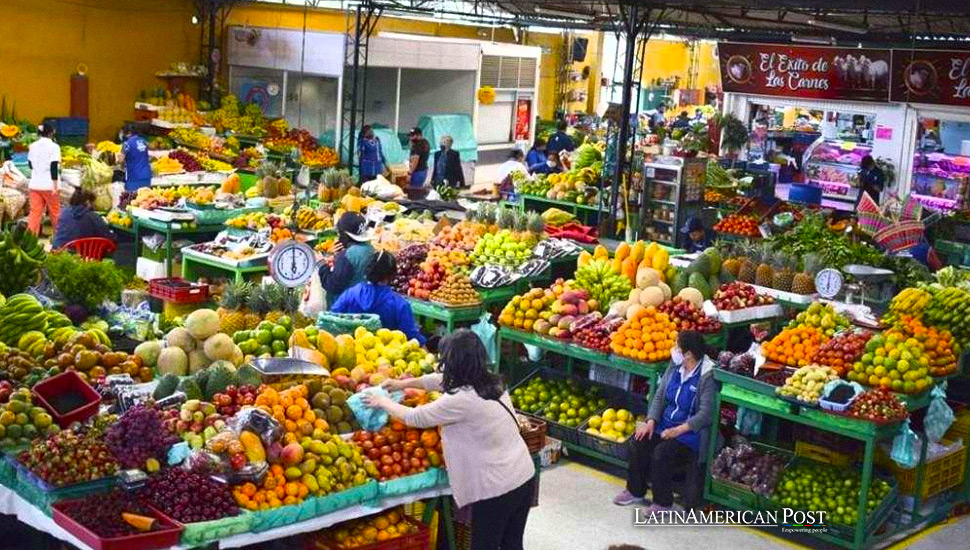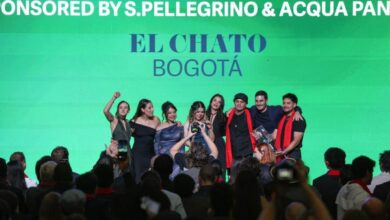Bogotá’s Marketplaces: Culinary Gems of Colombia

Bogotá’s marketplaces, once traditional trading spots, have transformed into gastronomic hubs, celebrating Colombian culinary heritage and drawing both national and international acclaim, becoming essential destinations for cultural and culinary tourists.
Over the last decade, the marketplaces of Bogotá have experienced a profound metamorphosis. From their origins as conventional spots for daily groceries, they have blossomed into vibrant epicenters of gastronomy, championing the essence of Colombian culinary heritage. These markets, interspersed among vendors of fruits, vegetables, and various goods, now host gastronomic jewels that have garnered national and international accolades, making them essential stops for culinary enthusiasts and tourists alike.
In the heart of the Colombian capital, the Plaza de La Perseverancia stands out as a prime example of this transformation. Óscar Moreno, manager of Tolú, a prominent eatery within the plaza, describes hosting the restaurant there as a delightful experience. He emphasizes how the plaza attracts tourists and showcases the nation’s culinary wealth through its diverse food offerings, providing a comprehensive taste of Colombia’s extensive gastronomic culture.
Bogotá boasts around fifty marketplaces, sixteen of which are managed by the Institute for Social Economy (IPES) under the city’s municipality. As noted by the Bogotá Tourism Secretary, these markets are significant because they are the focal points of a grand cultural and gastronomic confluence, encapsulating social, commercial, political, and religious interactions.
La Perseverancia’s Culinary Legacy
Located in the La Macarena neighborhood, close to notable attractions like the National Museum and the Distrital Planetarium, La Perseverancia marketplace has gained fame for its culinary offerings. Its reputation soared, especially after featuring in the Netflix documentary’ Street Food: Latin America’ in 2020. Now, the plaza is exceptionally bustling on weekends, with long queues of patrons eager to sample traditional dishes like ajiaco — a hearty Bogotán soup made of potatoes, chicken, and guascas, enriched with cream and olives — and an array of meat, chicken, and fish dishes that reflect Colombia’s diverse gastronomy.
Luis Enrique Rodríguez, the plaza’s administrative assistant, shares that La Perseverancia hosts about 40 restaurants across its two levels, capable of serving 1,500 to 2,000 customers. The marketplace began construction in 1940 on land owned by Leo Koop, founder of the Bavaria brewery. It underwent renovations in the past decade to expand its gastronomic area, aiming to introduce Colombian cuisine to a broader, especially international, audience.
Declared a cultural heritage site, La Perseverancia is esteemed as a gastronomic and tourist attraction in Bogotá, maintaining traditions connected to agriculture, cultivation, and cooking. The marketplace continues offering fruits, vegetables, groceries, meats, and houses pet shops, handicraft stalls, and plant and flower vendors.
Tolú: A Story of Culinary Excellence
Tolú, renowned for its ajiaco, operates in a modest space but is driven by the passion of its cooks and waitstaff to serve not only this iconic dish but also mote de queso, a delicacy featuring ñame (a tuber from the Atlantic coast) and traditional coastal cheese. The restaurant’s backstory is compelling, rooted in the journey of its founder, Luz Dary Cogollo, from a street vendor to a respected restaurateur in Bogotá. Named after her hometown in the Sucre department, Tolú 2016 was honored with Bogotá’s best ajiaco award by the District Institute of Tourism (IDT).
Despite the acclaim and opportunities to relocate to larger premises, Tolú remains committed to its roots. Moreno reveals the founder’s dedication to preserving the essence of traditional cooking, emphasizing the significance of showcasing authentic Colombian cuisine within the bustling environment of a marketplace.
The evolution of Bogotá’s marketplaces into culinary destinations reflects a broader trend across Latin America, where markets are increasingly recognized as venues for trade and cultural and gastronomic nuclei. These transformations mirror the region’s evolving identity, where traditional practices meld with contemporary influences, creating dynamic spaces celebrating Latin America’s rich heritage and diverse flavors.
In cities like Mexico City, Lima, and Buenos Aires, marketplaces serve as cultural landmarks, offering locals and visitors alike a taste of the region’s culinary diversity and deep-rooted cultural traditions. Through their evolution, these markets have become instrumental in preserving and promoting local cuisines, providing a vital link between the past and the present.
The case of Bogotá’s marketplaces, especially La Perseverancia, underscores the intrinsic value of these spaces in fostering a sense of community, heritage, and culinary innovation. As these markets continue to draw domestic and international visitors, they contribute to the local economy and play a crucial role in the gastronomic storytelling of the region, offering a tangible experience of Colombia’s culinary history and contemporary practices.
Moreover, the international recognition of places like Tolú within these markets highlights the global appeal of Latin American cuisine and its potential to transcend borders, connecting people through the universal language of food. This acclaim also encourages other markets and food vendors across the region to elevate their offerings, blending traditional recipes with modern culinary techniques to create innovative dishes that captivate a global audience.
The transformation of Bogotá’s marketplaces into culinary hubs is more than a local phenomenon; it is part of a larger narrative of cultural and economic revival across Latin America. These spaces are not merely points of food sale but are vibrant centers of community life, heritage preservation, and culinary innovation. They serve as living museums, displaying the rich tapestry of Latin American culture, history, and gastronomy.
As Bogotá’s marketplaces like La Perseverancia continue to evolve, they set a precedent for other Latin American markets to follow, showcasing the potential of these traditional spaces to adapt and thrive in the modern world. They demonstrate how culinary heritage can be preserved and revitalized, offering new experiences, flavors, and learning opportunities to all who visit.
Also read: The Business of Preserving Pets: Taxidermy Finds a Market in Colombia
The story of Bogotá’s marketplaces is a testament to the dynamic interplay between tradition and modernity in Latin America’s culinary scene. As these markets transform into gastronomic destinations, they retain their cultural significance and gain new relevance in the contemporary culinary landscape, celebrating the rich, diverse, and evolving flavors of Colombia and Latin America. Through this culinary renaissance, Bogotá’s markets continue to be vital stewards of the region’s gastronomic legacy, paving the way for a future where tradition and innovation coexist harmoniously in every bite.




